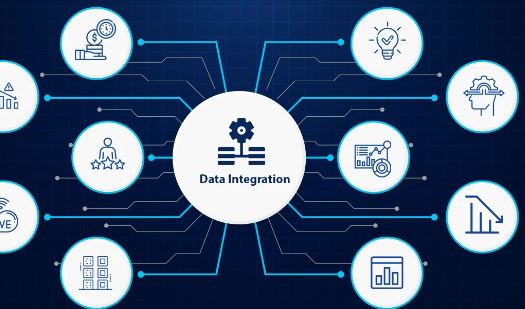In today’s fast-paced and data-driven business environment, the ability to integrate and manage data effectively is crucial. That’s where SSIS 816 comes into play. SSIS 816, short for SQL Server Integration Services 816, is a powerful data integration tool that enables businesses to consolidate, transform, and load data from various sources into a single, unified format. With its robust features and capabilities, SSIS 816 empowers organizations to make informed decisions based on accurate and up-to-date information.
Understanding the Importance of Data Integration in Modern Businesses
Data integration is the process of combining data from different sources to create a unified view of information. In today’s interconnected world, businesses generate and collect vast amounts of data from a variety of sources, such as databases, spreadsheets, and cloud services. However, this data is often stored in different formats and structures, making it challenging to extract meaningful insights. Data integration solves this problem by bringing together data from disparate sources, enabling businesses to gain a holistic view of their operations and make data-driven decisions.
Effective data integration is essential for several reasons. First, it improves data quality by eliminating inconsistencies and duplications. By integrating data from various sources, businesses can uncover discrepancies and resolve them, ensuring data accuracy and reliability. Second, data integration enhances data accessibility and usability. Instead of searching through multiple systems and databases, users can access all the necessary information from a single source, saving time and effort. Finally, data integration enables organizations to achieve a 360-degree view of their customers, allowing for targeted marketing campaigns, personalized experiences, and improved customer satisfaction.
Key Features and Capabilities of SSIS 816
SSIS 816 offers a wide range of features and capabilities that facilitate seamless data integration. One of its key strengths is its ability to connect to numerous data sources and destinations, including databases, flat files, Excel spreadsheets, and cloud platforms. This flexibility allows businesses to integrate data from diverse systems, regardless of their underlying technologies.
Another notable feature of SSIS 816 is its support for data transformation. Data often needs to be cleansed, standardized, or enriched before it can be effectively utilized. SSIS 816 provides a rich set of transformation tasks, such as data conversion, sorting, aggregating, and merging, to ensure that data is in the desired format and structure.
SSIS 816 also offers robust error handling and logging capabilities. When dealing with large datasets and complex integration processes, errors are bound to occur. SSIS 816 allows developers to handle errors gracefully by defining error flows and logging mechanisms. This ensures that any issues are quickly identified and resolved, minimizing the impact on business operations.
Best Practices for Designing and Implementing Data Integration Solutions
Designing and implementing a successful data integration solution requires careful planning and adherence to best practices. Here are some key guidelines to follow:
- Understand the data requirements: Before starting any integration project, it is essential to have a clear understanding of the data requirements. This includes identifying the sources and destinations of data, defining data mappings and transformations, and establishing data quality rules.
- Use an incremental approach: Breaking down the integration process into smaller, manageable tasks helps reduce complexity and improves maintainability. Implementing changes incrementally also allows for easier testing and troubleshooting.
- Leverage data profiling and cleansing: Data profiling tools can help identify data quality issues, such as missing values, duplicates, and outliers. Cleaning and standardizing data before integration ensures its accuracy and consistency.
- Optimize performance: Performance tuning is crucial for large-scale data integration projects. Techniques such as parallel processing, data partitioning, and indexing can significantly improve processing speed and efficiency.
- Implement monitoring and error handling: Monitoring the integration process and implementing robust error handling mechanisms is essential for maintaining data integrity. Regularly monitoring data flows and implementing appropriate logging and notification systems help identify and resolve issues promptly.
Tips for Optimizing Performance and Efficiency in SSIS 816
While SSIS 816 is a powerful tool, there are several tips and tricks you can employ to optimize its performance and efficiency:
- Use data compression: Compressing data during extraction and loading processes can significantly reduce the amount of disk space required and improve performance.
- Leverage parallel processing: SSIS 816 supports parallel execution, allowing you to process multiple tasks simultaneously. By leveraging parallel processing, you can maximize hardware utilization and minimize execution time.
- Use staging tables: When dealing with complex data transformations, using staging tables can improve performance. Staging tables act as intermediate storage areas, allowing for incremental processing and reducing the complexity of transformation logic.
- Optimize data flow transformations: Take advantage of the built-in data flow transformations provided by SSIS 816. These transformations are designed to handle common data manipulation tasks efficiently.
- Enable logging and performance counters: Enabling logging and performance counters allows you to monitor the execution of your SSIS 816 packages. This information can help identify performance bottlenecks and optimize your integration processes.
By implementing these tips, you can ensure that your SSIS 816 packages run smoothly and efficiently, delivering accurate and timely data integration.
Common Challenges and How to Overcome Them in SSIS 816
While SSIS 816 is a robust data integration tool, there are some common challenges that developers may encounter. Here are a few challenges and tips on how to overcome them:
- Data validation and cleansing: Ensuring data accuracy and quality is crucial for successful integration. Implement data validation and cleansing techniques, such as data profiling and standardization, to identify and resolve data issues before integration.
- Performance optimization: Large datasets and complex integration processes can impact performance. Use techniques like parallel processing, data partitioning, and proper indexing to optimize performance and reduce execution time.
- Error handling and logging: SSIS 816 provides powerful error handling and logging capabilities, but it’s essential to design these mechanisms properly. Define error flows and implement logging at critical points in your integration process to capture and resolve errors promptly.
- Version control and deployment: Managing multiple versions of SSIS 816 packages and deploying them across different environments can be challenging. Utilize version control systems and deployment frameworks to ensure smooth package management and deployment.
By understanding these challenges and implementing the recommended solutions, you can overcome obstacles and achieve efficient and reliable data integration with SSIS 816.
Advanced Techniques and Advanced Tips for Mastering Data Integration with SSIS 816
Once you have a solid foundation in SSIS 816, you can explore advanced techniques and tips to further enhance your data integration skills. Here are a few advanced techniques to consider:
- Using variables and expressions: SSIS 816 allows you to define variables and use expressions to dynamically configure package properties and control the flow of data. Mastering variables and expressions can greatly enhance the flexibility and adaptability of your integration processes.
- Implementing event handlers: Event handlers in SSIS 816 enable you to respond to specific events during package execution. By leveraging event handlers, you can execute custom logic based on different scenarios, such as sending notifications or triggering additional tasks.
- Utilizing package configurations: Package configurations allow you to externalize package settings, making them easier to manage and maintain. By utilizing package configurations, you can modify package behavior without having to modify the package itself.
- Exploring custom components: SSIS 816 provides a framework for developing custom data flow components. By creating custom components, you can extend the functionality of SSIS 816 and tailor it to your specific integration requirements.
By delving into these advanced techniques and tips, you can take your data integration skills to the next level and unlock the full potential of SSIS 816.
Leveraging SSIS 816 for Real-Time Data Integration
Real-time data integration is becoming increasingly important for businesses that require up-to-date information for decision-making. SSIS 816 offers several features and capabilities that enable real-time data integration:
- Change Data Capture (CDC): CDC is a feature in SSIS 816 that captures and records changes made to source data. By using CDC, you can identify and propagate only the modified data, minimizing the processing time required for data integration.
- Event-driven processing: SSIS 816 supports event-driven processing, allowing you to trigger package execution based on specific events or conditions. This enables you to respond to real-time data changes and perform integration tasks as soon as new data becomes available.
- Streaming data integration: SSIS 816 provides support for streaming data integration, allowing you to process continuous data streams from sources such as sensors, IoT devices, and social media platforms. This enables businesses to harness real-time data for immediate insights and actions.
By leveraging these features, you can implement real-time data integration solutions using SSIS 816 and stay ahead in today’s fast-paced business landscape.
Integrating SSIS 816 with Other Data Management Tools and Platforms
While SSIS 816 is a comprehensive data integration tool, integrating it with other data management tools and platforms can further enhance its capabilities. Here are a few integration scenarios to consider:
- SSIS 816 and Azure Data Factory: Azure Data Factory is a cloud-based data integration service that allows you to orchestrate and automate data workflows. By integrating SSIS 816 with Azure Data Factory, you can leverage its cloud-based capabilities and scale your data integration processes as needed.
- SSIS 816 and Power BI: Power BI is a powerful business intelligence tool that enables data visualization and reporting. By integrating SSIS 816 with Power BI, you can extract, transform, and load data into Power BI datasets, allowing for real-time insights and interactive dashboards.
- SSIS 816 and Hadoop: Hadoop is a distributed computing framework for storing and processing large datasets. By integrating SSIS 816 with Hadoop, you can leverage its scalability and parallel processing capabilities for big data integration and analytics.
- SSIS 816 and Salesforce: Salesforce is a popular customer relationship management (CRM) platform. By integrating SSIS 816 with Salesforce, you can extract and load data between Salesforce and other systems, enabling seamless data synchronization and integration.
By integrating SSIS 816 with other data management tools and platforms, you can create a comprehensive and robust data integration ecosystem that meets your organization’s unique requirements.
Conclusion: Taking Your Data Integration Skills to the Next Level with SSIS 816
SSIS 816 is a powerful and versatile tool for data integration, enabling businesses to consolidate, transform, and load data from various sources into a single, unified format. By understanding the importance of data integration, mastering SSIS 816’s features and capabilities, and following best practices and tips, you can become a proficient data integration professional.
Remember to leverage SSIS 816 for real-time data integration, integrate it with other data management tools and platforms, and continuously explore advanced techniques to further enhance your skills. By doing so, you can unlock the full potential of SSIS 816 and take your data integration skills to the next level.






